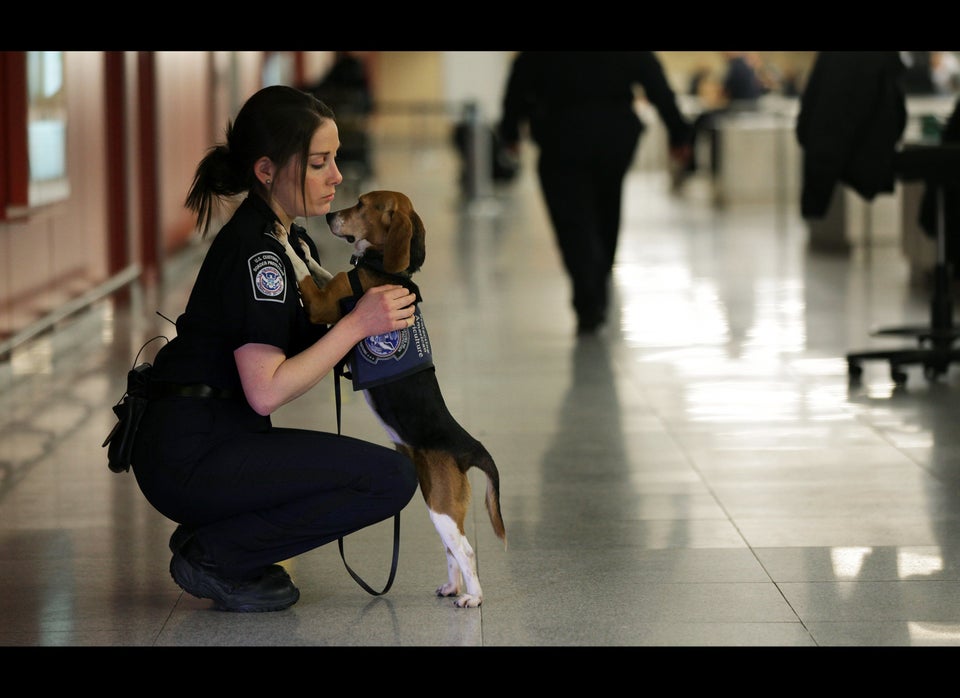
Los Angeles animal shelters are seeing a sharp plunge in euthanasia rates this year, approaching a near-record low for the past decade.
Los Angeles Animal Services was on track to have put down 4,000 fewer cats and dogs in the fiscal year that ended June 30 compared to the previous year, with final numbers due out next week.
"The city is poised for its best year of reducing shelter deaths and increasing the live-save rate since the city established its no-kill goal a decade ago," said LAAS General Manager Brenda Barnette, in a statement. "I believe this success belongs to all pet loving Angelenos."
In summer 2003 Mayor James Hahn declared the city could reach a no-kill target within five years, based on construction plans at the time for additional shelters; in 2005 then-candidate Antonio Villaraigosa also supported the goal in his mayoral campaign. But with later budget cuts, the city hasn't come close to that target. The average annual euthanasia rate has hovered between 19,500 and 22,000 animals over the past four years, as many owners abandoned their pets during the recession, officials say.
But in the first 11 months of 2012-13, that number dropped to 15,200 deaths, according to the LAAS website, with hundreds of fewer deaths each month than the year before.
Add an estimated 2,000 cats and dogs killed last month, and the final tally for 2012-13 may be under 17,500 -- at least 4,000 fewer cats and dogs put down than the year before. The June euthanasia count is expected to be released next week.
The sudden decrease may be the result of thousands of fewer pets taken into the shelters this year, plus increased adoptions by L.A. families and rescue organizations.
Barnette, who has run Animal Services since 2010, also credited her staff and intense support by such groups as the ASPCA, Pet Care Foundation, Found Animals Foundation and the Best Friends Animal Society-Los Angeles, which runs a city-owned Northeast Valley shelter.
"It's a victory for the city: the community has come and adopted," said Best Friends executive director Marc Peralta of the Best Friends Pet Adoption & Spay Neuter Center in Mission Hills. "(But) as we become closer to saving more animals, we're going to need the community's support more than ever to save animals that may require more behavioral and medical help."
Utah-based Best Friends pulled 2,800 pets from city shelters last year, adopting 1,500 to the public and transferring 1,100 to animal shelters in Utah, Colorado and Washington, he said.
Peralta, who heads a No Kill Los Angeles coalition that facilitated 23,421 adoptions and nearly 4,500 spay/neuter surgeries after it was founded last year, put the average ratio of dogs and cats saved in city shelters last year at 64 percent -- or 77 percent for dogs and 41 percent for cats.
At the peak in 1971, Los Angeles euthanized nearly 111,000 dogs and cats, according to a city report. The modern low was in 2007-08, when nearly 15,200 were euthanized. When Hahn declared in 2003 that L.A. would be a no-kill city -- vowing not to kill healthy or treatable pets within five years -- the city put down 30,000 animals a year.
Now that figure is projected to be slashed nearly in half.
"It's a big deal," said Aimee Gilbreath, executive director of the Los Angeles-based Found Animals Foundation, a coalition member that has worked to lower the city's kill rate. "There are many groups who have been working their fannies off to make it happen."
Last December, Found Animals launched a "Twelve Pets of Christmas" initiative to encourage adoption of the shelters' homeliest pets. More than 3,000 were saved, including 1,000 from L.A. shelters.
It also paid for a mobile spay-neuter clinic in South Los Angeles, as well as a South Los Angeles shelter specialist to help ward off the surrender of once-loved family pets. In two months, 400 pets were encouraged to stay with families because of low-cost vet care or housing aid.
Some said the challenge is always the June and July kitten season.
"It's the toughest time for shelters everywhere, when boxes after boxes (of newborn kittens) are dropped off," Gilbreath said. "This is the time we're always begging for more foster parents (and bottle feeders)."
dana.bartholomew@dailynews.com
@DN_DanaBart on Twitter ___
(c)2013 the Daily News (Los Angeles)
Visit the Daily News (Los Angeles) at www.dailynews.com
Distributed by MCT Information Services
